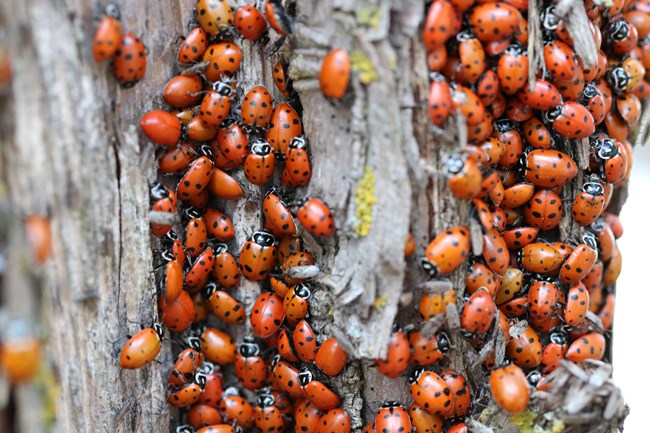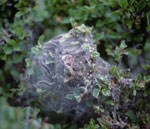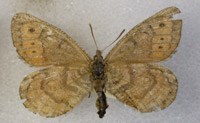|
Capulin Volcano supports a wide variety of insects and particularly large populations of some that migrate to high elevations. However, mosquitoes are not a problem here, most likely because the volcano lacks permanent water sources for breeding sites. Complete invertebrate surveys have not yet been conducted in the park, but lists are available for Union County, NM. 
NPS photo / Sam Prestigiacomo Each summer at Capulin Volcano, a new generation of lady beetle participates in a wind-carried migration and takes up residence at the highest points of the volcano. After feeding all summer, they hibernate through the winter on the volcano. Surviving beetles then catch a warm current off the volcano in February to the south to reproduce. Since the wind carries the lady beetle in its migration, it has a hard time controlling its destination and may go to aphid-rich fields near the volcano or maybe to wheat fields in Texas. During a lifespan of a few months, the females lay up to 500 eggs on leaves and twigs. The eggs hatch and the larvae gorge themselves on the aphids. After the larvae clear the area of aphids, they pupate. Since the larvae usually clean the area of their favorite food, aphids, the adults migrate back to Capulin Volcano to await the opportunity when they too can go back to these aphid-rich areas and lay their eggs.
False Cinch Bugs are less than 1/4 inch (1/2 cm) long, brownish gray, narrow bodied true bugs. While immature, they have inconspicuous red markings on their body. They feed on plants of the mustard family. As they reach maturity, they begin to cluster together in extremely high numbers in preparation for migration. They are a temporary nuisance but do little or no feeding while clustered. Wet winters result in greater mustard populations which will lead to larger populations of False Cinch Bugs. These bugs are numerous at the top of the volcano. They are particularly attracted to light colors, especially white. While annoying, they do not bite. 
NPS photo 
NPS photo |
Last updated: April 24, 2025
